San Diego High fell with a resounding thud in quarterfinals of the Southern Section playoffs.
A 26-18 loss to old nemesis Long Beach Poly in Balboa Stadium was surprising in its decisiveness, devastating in its finality.
Especially for coach Duane Maley, who announced his intention to retire from coaching and go into administration at the end of the school year. This team was supposed to be the best since Maley was named head coach after the 1947 season.
How could the Cavemen lose, having outscored their first 10 opponents by an average score of 44-3? With a half-dozen runners who punctuated the trademark, long-distance San Diego running game? And led by perhaps the outstanding prep quarterback in the country?
BENNIE WAS RIGHT
An observation by Point Loma coach Bennie Edens would ring true down the road:
“San Diego has a more dangerous backfield than last year, but a weaker line, both offensively and defensively,” said Edens.
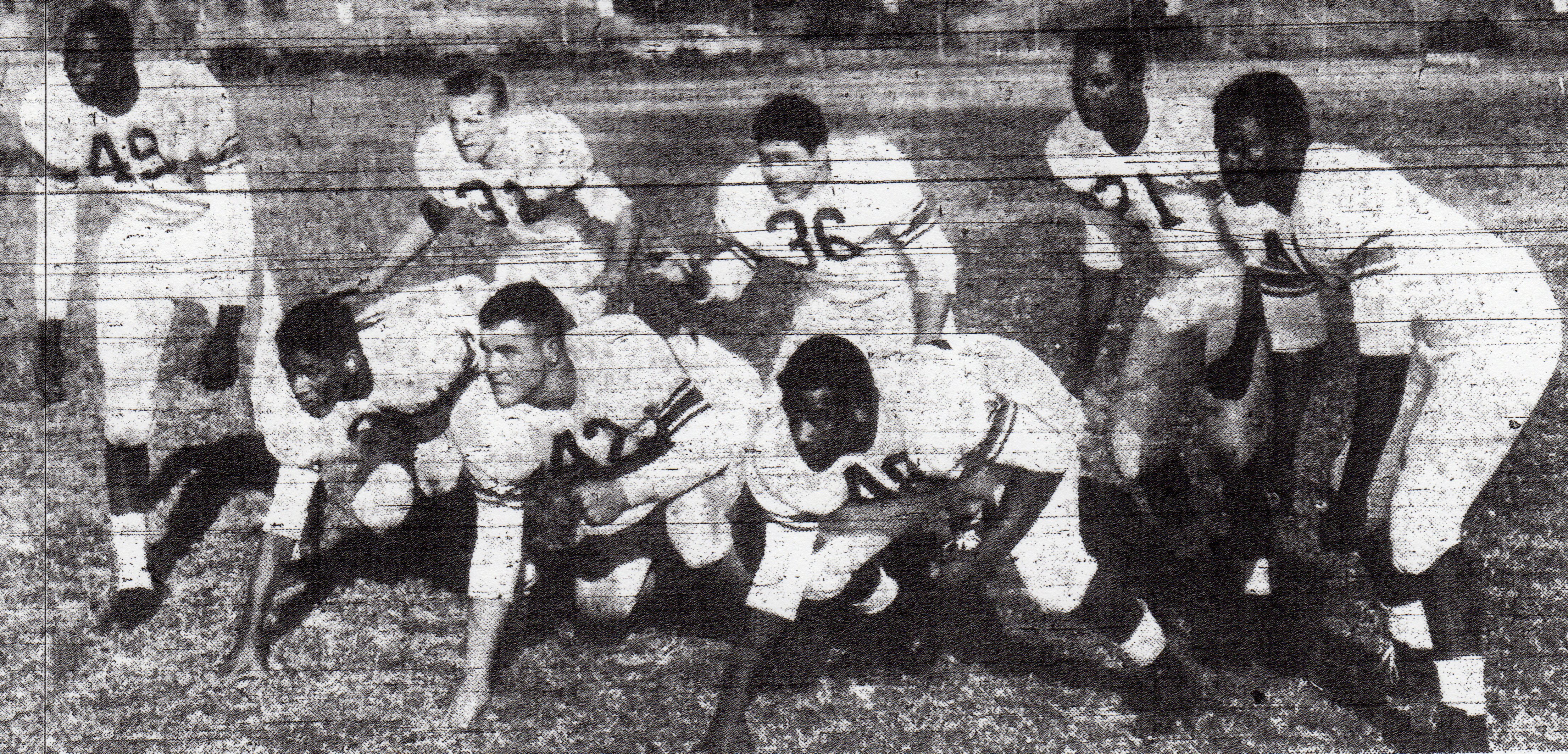
Edens spoke after his team had dropped a 40-0 decision to the Cavers in Week 3.
Hillers loyalists scoffed. Sour grapes, they said.
After all, Edens had been outscored a combined 143-13 by Maley’s squads since Bennie became the Pointers’ mentor in 1955.
NO INTERSECTIONALS
It’s hard to be critical of a team that allows only 6 points during the regular season and wins its first playoff, 54-13 over an outclassed opponent from El Monte Arroyo.
But San Diego obviously had faced only inferior opponents from a weak and thin lineup during the season.
Stunned by Poly’s speed and power, San Diego’s shock could be attributed in part to a crowded City Prep League.
Formed in 1950 the CPL had grown to eight schools and this year played a schedule of seven league games.
A loaded CPL meant that, for the first time since 1949, Maley was unable to book early intersectional games against tough Northern teams.
Those games against Los Angeles or Orange County opponents allowed Maley to gauge the Cavers’ strength and prepare them for postseason challenges.
Finding competition from out of the area becomes more difficult as the season progresses. Those schools have their own league seasons under way.
San Diego opened with league games against Kearny (25-0) and La Jolla (59-0) and could fill its only open date in Week 5 against the winless Chula Vista Spartans.
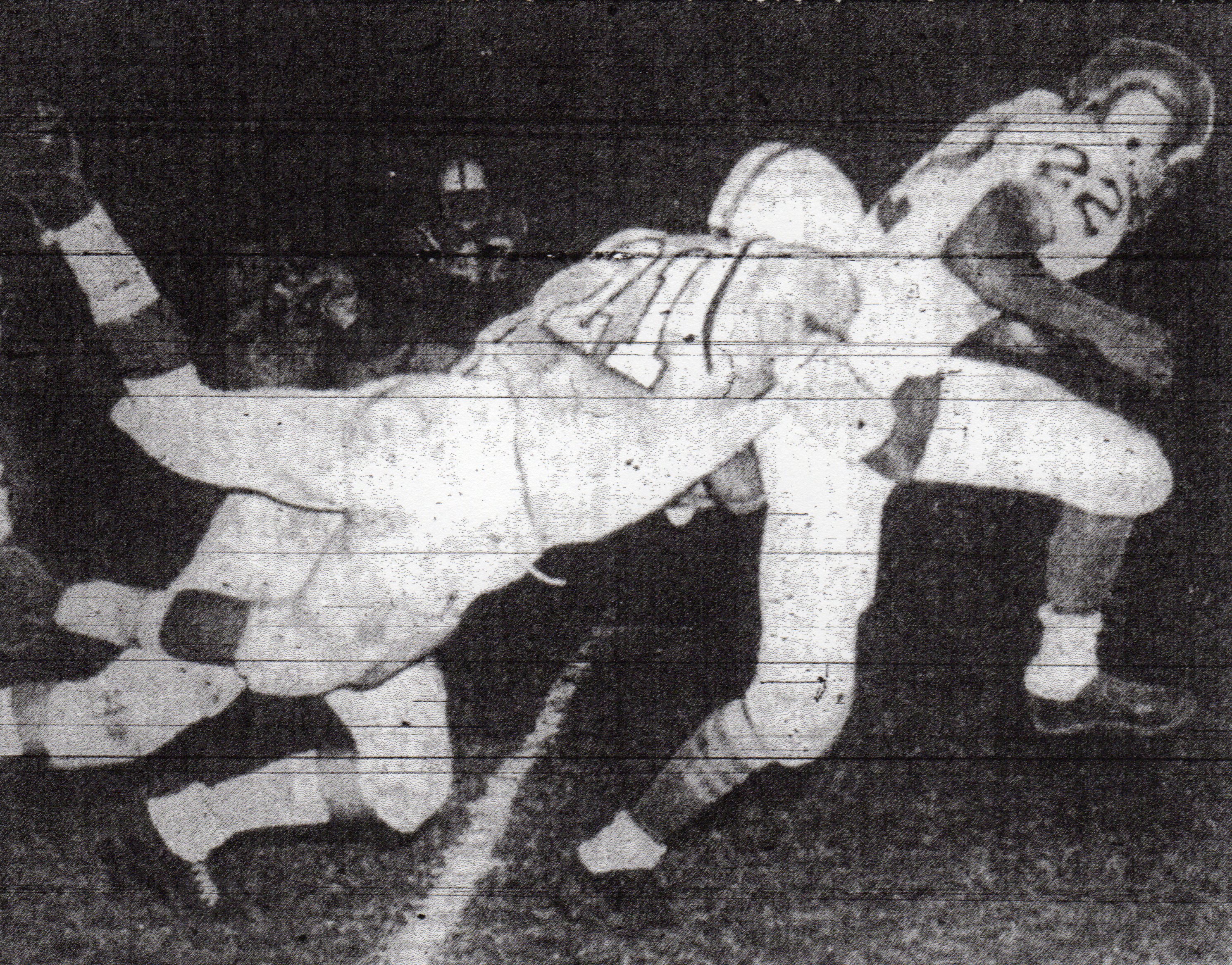
ELUSIVE HARES
Despite losing CIF player of the year Dee Andrews to a shoulder injury early in the game, the Jackrabbits rushed for a whopping 397 yards as Lonzo Ervin, Willie Martin, and Willie Brown picked up for Andrews and ran over and around the slower San Diego defenders.
Ervin had 150 yards in 16 carries, after getting only seven attempts in the previous two games. Brown gained 140 yards in 18 carries.
The bigger, faster Poly linemen manhandled the Cavers and the Jackrabbits’ team speed easily was equal to San Diego’s.
San Diego quarterback Ezell Singleton threw for two touchdowns but completed only 10 of 21 passes for 184 yards.
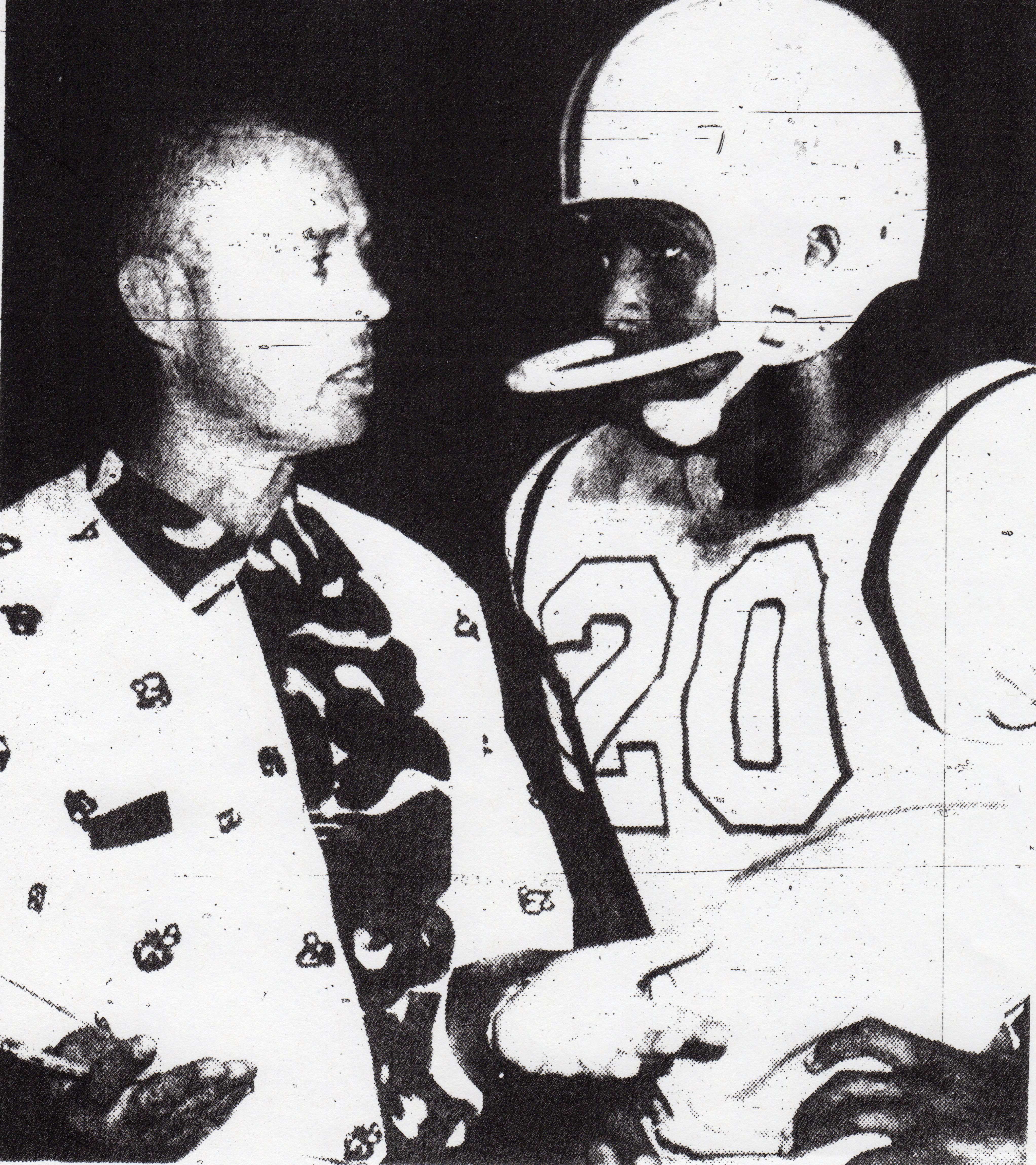
POSSESSIVE HARES
The Cavers moved the ball but they didn’t have it very often, four possessions in the first half and six in the last 24 minutes.
Long Beach signaled its intentions at the outset, moving 60 yards in 11 plays for a touchdown as Andrews contributed 31 yards in three carries before he left the game.
San Diego immediately hit back as Singleton passed 38 yards to Robert Osborne for a touchdown, but Richard (Prime) McClendon was stuffed on the extra point try and the Cavers never got closer than 7-6.
Poly had leads of 19-6 and 26-12 before Singleton connected with Steve Andrews for a late touchdown and final score.
“Long Beach did nothing we did not expect, offensively or defensively, so we have no alibis,” said Maley, who added that he did not believe Poly was the equal of the 1956 or ’57 Downey teams that had beaten the Cavers in the playoffs.
Maley put his retirement on hold. Lots of good players were returning in 1959 and so would Duane, for a final season.
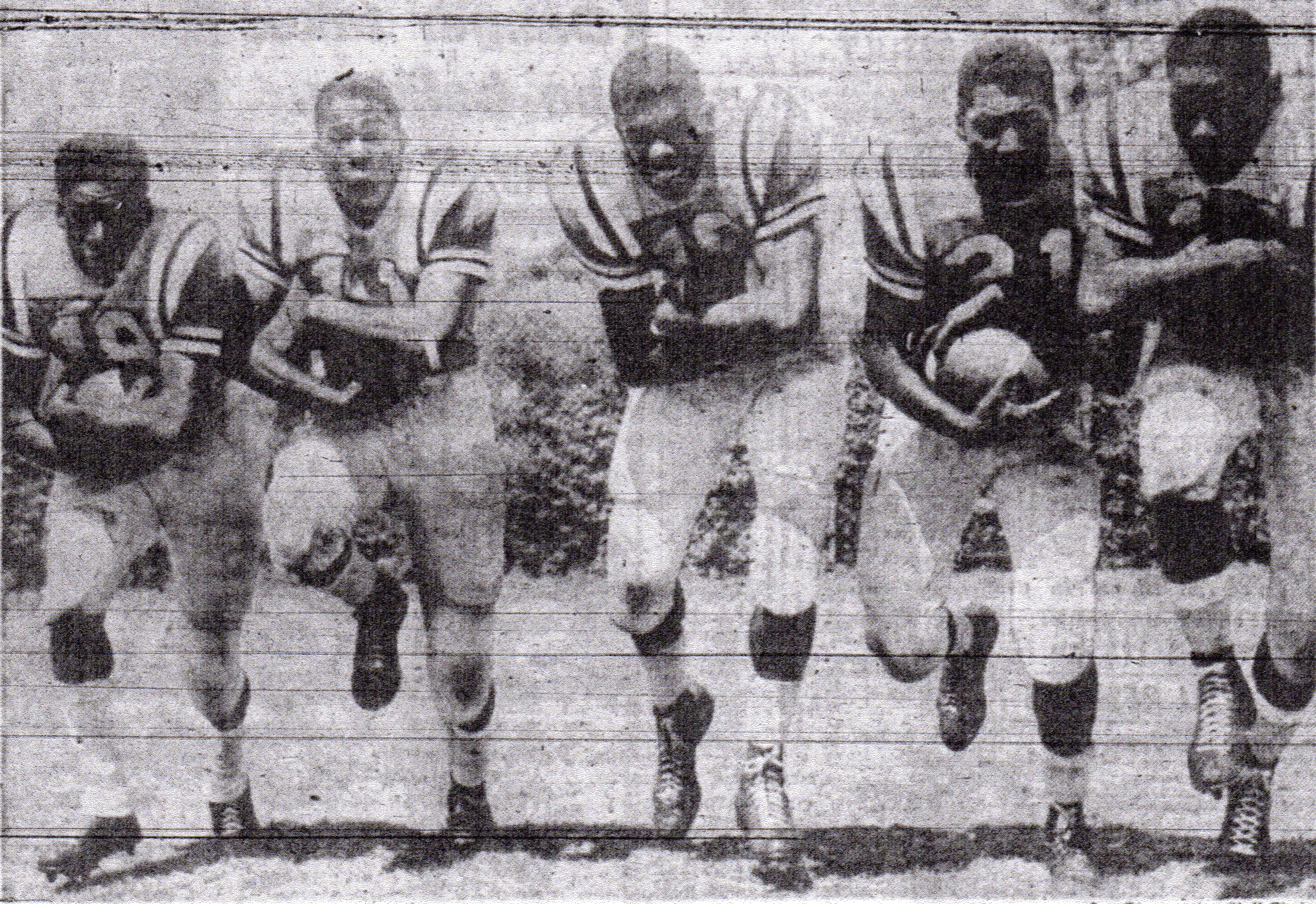
DIVORCE INEVITABLE
Dick Grihalva, a local car dealer, school board member, and sports fan, fired probably the first shot in the eventual separation of San Diego schools from the CIF Southern Section.
Grihalva, who had been complaining to anyone who would listen, was quoted in The San Diego Union on June 17 as being critical of the academic standards of the CIF Southern Section.
(Local schools and school districts set academic standards, not the CIF; the San Diego board invoked a C average but no F’s rule).
The salesman ramped up his rhetoric about academic standards at a board meeting on Oct. 22 and took a curious shot at J. Kenneth Fagans, the Southern Section commissioner.
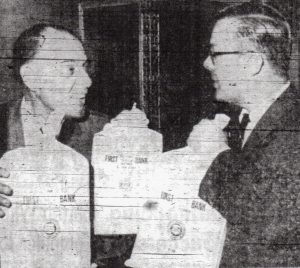
Grihalva said Fagans “is building quite an empire within the school district (?) and is trying to get everything as far east as Phoenix, Arizona, to as far north as possible.”
That Phoenix and some Nevada schools had been at-large members of the CIF years before Fagans became commissioner in 1954 didn’t matter.
LET’S GO SMALL
Grihalva sought a San Diego Section of the nine city schools. He perhaps was thinking of the similarly tiny Oakland and San Francisco sections, each bounded by their city limits.
Fagans thought a border city bolt from the 44-year-old Southern Section was premature but asked only that the San Diego contingent give two years’ notice if it planned to withdraw.
Those affected most, the coaches and athletes, student bodies, and fans were almost unanimously against a departure.
But Grihalva had the ear of supt. Ralph Dailard and other school board members, people whose organs of hearing could have been made of tin.
Within one year, San Diego announced it was leaving the Southern Section and one year after that, in 1960, almost all schools in the County formed the San Diego Section.
Mountain Empire and Rancho Del Campo stayed with the older group. Fallbrook played football in a Southern Section league in 1960 but joined the locals in all other sports.
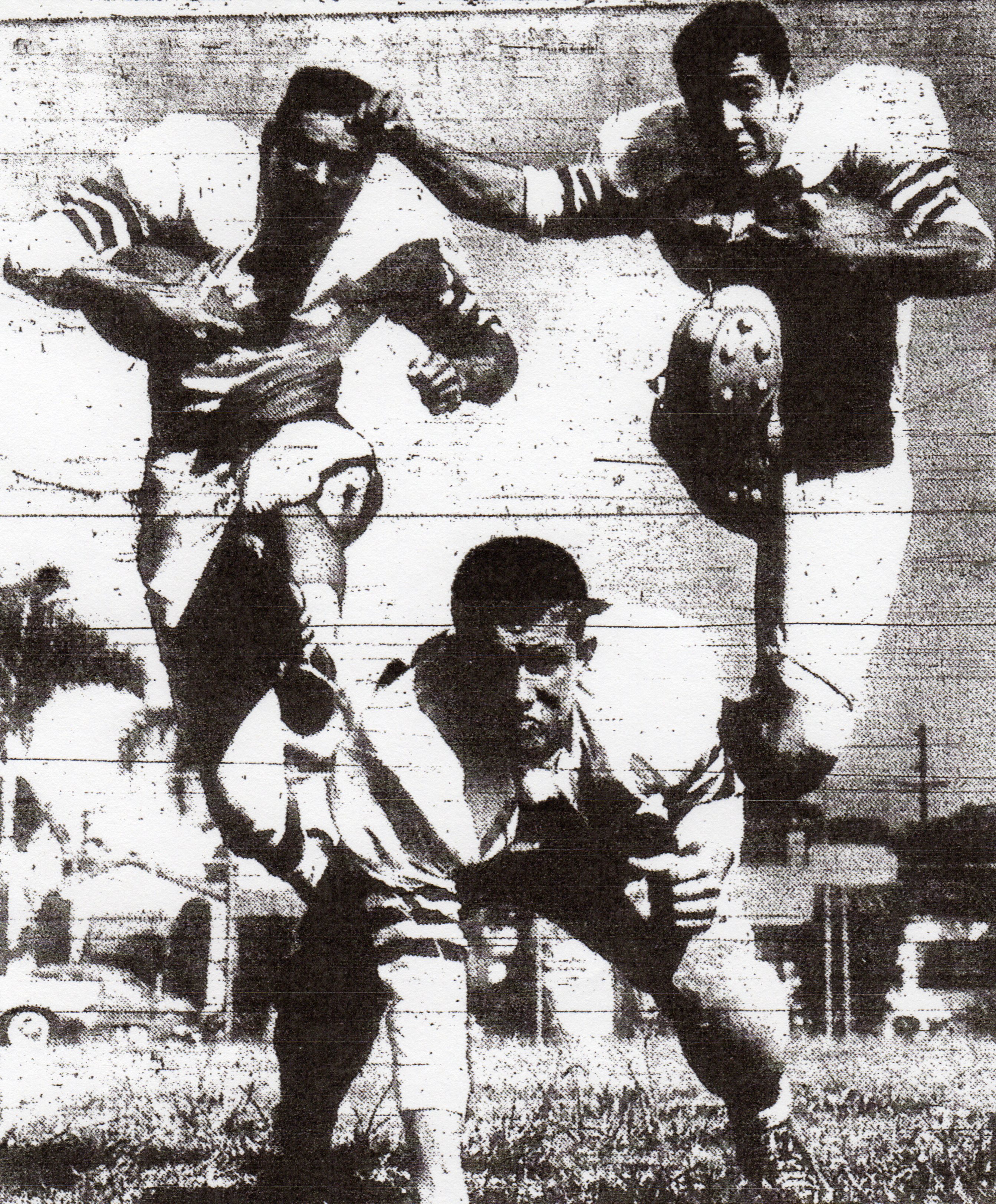
RANCH HANDS
Rancho Del Campo, a school for wayward young men in the mountains east of San Diego, fielded a football team for the first time.
The Rangers, through help of a benefactor, were able to purchase uniforms and other equipment discarded by the Naval Training Center in San Diego.
Campo students learned gardening and general maintenance, helped raise fowl, beef, other farm animals, and vegetables, and worked in auto and other shops besides attending school classes.
An arm of the San Diego County Probation Department, the Rangers coached by Chester Yanke, posted a 4-1 record in their inaugural try, losing only to Ramona, 58-6.
The Rangers were members of the Southern Prep League in 1958 and ’59 but joined the Mountain-Desert League with neighbor Mountain Empire and played against mostly Imperial Valley clubs after the San Diego-Southern Section divorce.
Campo would shut its football program following the 1963 season.
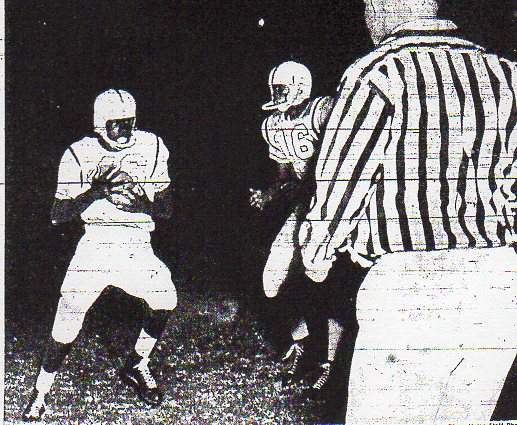
ROWDYISM
Grihalva also weighed in on recent incidents at night games and suggested that day games would be easier to supervise.
The parents of a son who attended Hoover wrote Dailard a letter about an episode following Lincoln’s game with Hoover on Nov. 14:
“Without warning he and another Hoover student were hit from behind, knocked down, eyes blackened and slugged around the head by a group of unidentified hoodlums.”
LESS INCOME
Dailard noted that the attack also could have taken place in the afternoon and that pressure to play games at night came from citizens who could not otherwise attend.
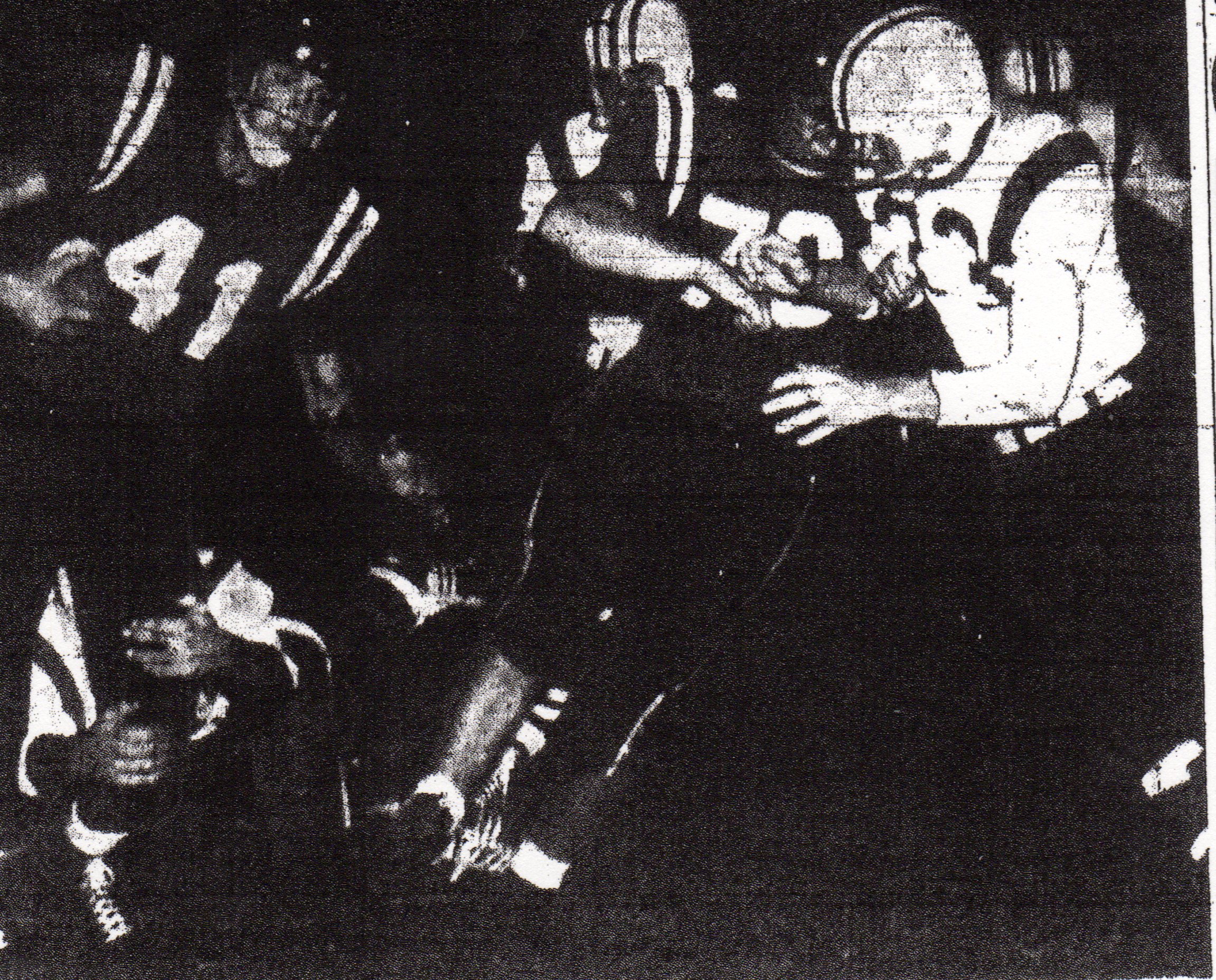
Day games would interrupt school, and daytime box office receipts are less than night receipts, said Dailard, who approved moving the annual football carnival from the evening to afternoon in 1959.
Assault would be a better word than rowdyism and it had been a fact of life around area high school football and basketball games going back decades.
Night athletics periodically would be suspended but return after cooling off periods.
131-YARD DRIVE
It was a game so bad it was memorable.
Point Loma edged Hoover, 13-12, overcoming 14 penalties for 149 yards, including eight, 15-yard assessments.
Hoover was fined 8 times for 75 yards.
Point Loma moved 71 yards in 11 plays for a touchdown in the second quarter that gave the Pointers a 13-0 lead.
Point Loma’s success was achieved in defiance of an additional 60 yards in penalties during the drive.
That wasn’t all. Hoover was hit for 15 yards during the Pointers’ march and there were four, 15-yard fouls in a span of five plays.
UNSEEN OBSTACLE
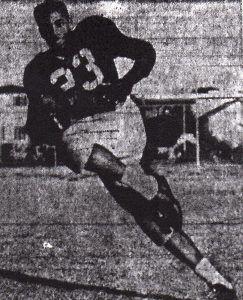
A full house of 5,000 persons at Chula Vista watched San Diego’s Ezell Singleton pass for 307 yards and 4 touchdowns and direct a ground attack that gained 219 yards in a 54-6 victory.
The host Spartans were feeling pretty good, however, after they closed to 14-6 with 1:17 remaining in the first half. Chula Vista, in the season’s fifth game, was the first to score against San Diego.
What followed was a Cavers touchdown with 16 seconds left and a bizarre scene in which several Chula Vista players, charging off the field to their locker room for the halftime intermission, were seen stumbling and crashing to the ground.
An attached rope to restrain spectators had been left unattended.
No one was injured, just embarrassed.
FUEL IGNITION
Henry (Sparky) Bishop of Point Loma sustained two severely bruised or broken thumbs
early in the season, and played only 5 minutes versus Kearny, 2 versus Crawford, and not at all at Santa Barbara.
Healthy, Bishop was not all thumbs.
Bishop blocked and tackled from his offensive and defensive line positions in a 26-7 win over La Jolla, scored a touchdown, and also helped out at safety.
FOOTBALL REIGNS
Almost 32,000 fans attended the two area football carnivals.
There were an estimated 19,500 persons in Balboa Stadium for the City Schools’ event and they saw a West team of San Diego, La Jolla, Point Loma, and Mission Bay, defeat the East of Lincoln, Hoover, Crawford, and Kearny, 14-6.
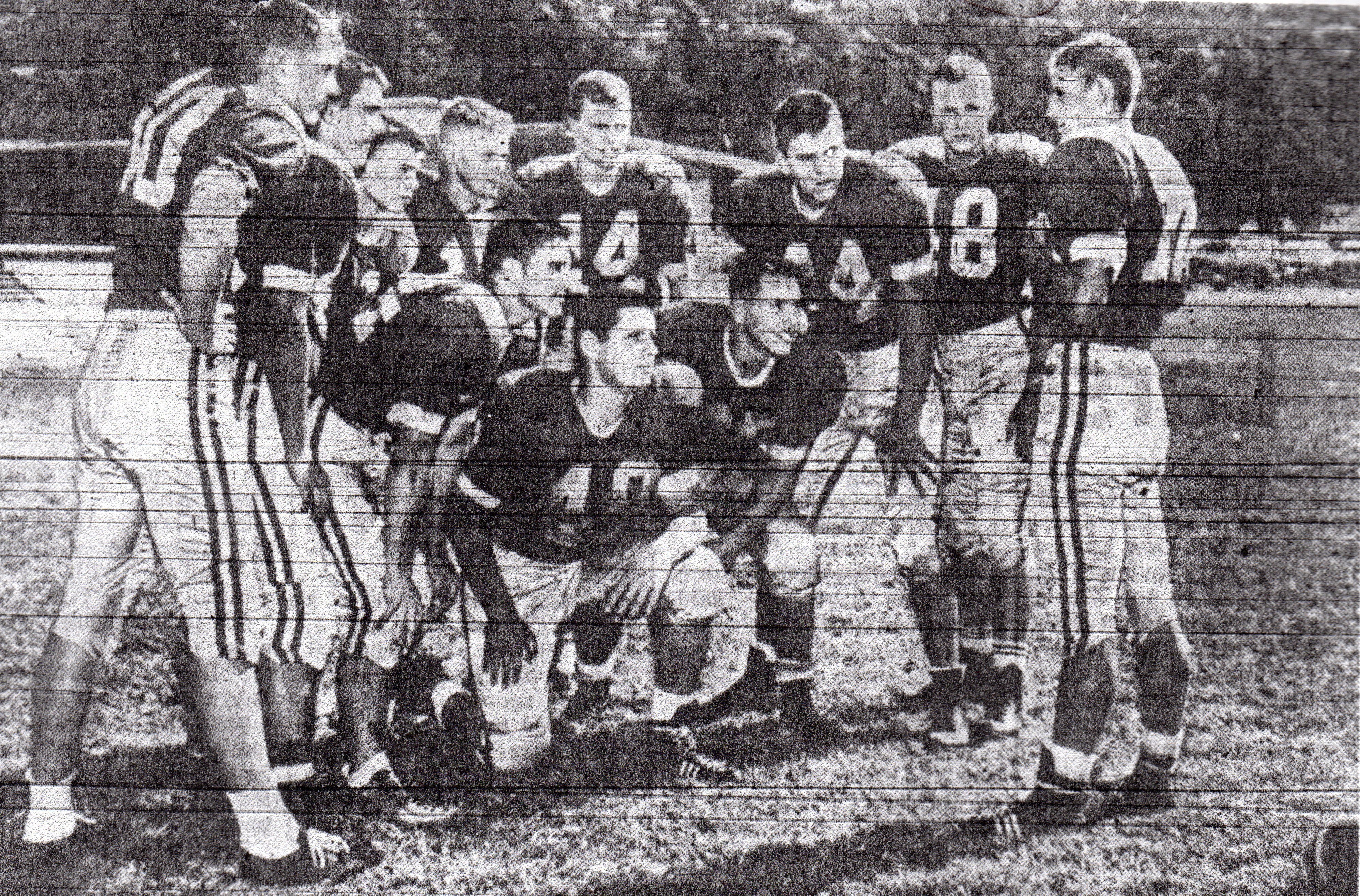
A overflow crowd of 12,200 was on hand in Aztec Bowl for the Metropolitan League carnival in which the East squad of Sweetwater, Chula Vista, Mar Vista (guest from Avocado League), and Mount Miguel edged the West’s Escondido, Grossmont, Helix, and El Cajon Valley, 12-6.
SIGN OF THE TIMES
Coach Dave Levy led a renaissance at Long Beach Poly, which made its first trip to the CIF playoffs since 1940.
After consecutive Southern Section championships in 1958-59, Levy coached for 16 years at USC and, when Chargers offensive line coach Jim Hanifan took the St. Louis Cardinals’ job in 1980, Levy answered a call from Chargers coach Don Coryell, with whom Levy served on John McKay’s first USC staff in 1960.
Levy coached the Chargers’ offensive line from 1980-87. After retiring from the NFL in 1994, Levy coached in Canada and then returned to his high school roots, continuing to mentor as an assistant at Harvard-Westlake in Studio City before finally hanging up his whistle in 2014.
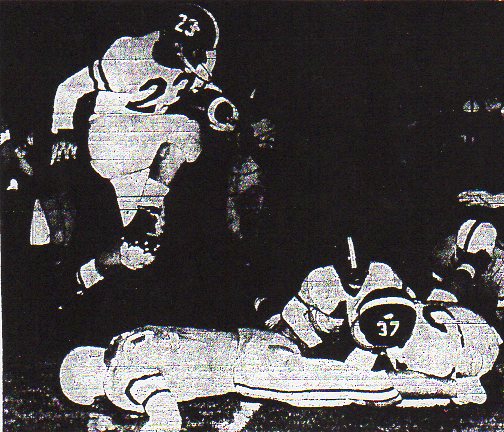
SEXISM OR CHAUVANISM?
The Buccaneers eliminated girl cheerleaders, because “they can’t lead,” said head coach Harry Anderson.
Bill Swank, a member of Mission Bay’s class of 1958, described the “curious throwback to the 1930s” in his Mission Bay history chronicle Gold Leather Helmets Black High Top Shoes:
“Head cheerleader Charlie Ramos was assisted by the lovely Bill Gould and John Westwood. They wore gold ivy league sweaters and black Bermuda shorts.”
All three also participated in sports at the school and Gould was one of the better hurdlers (:14.6 in the 120-yard highs) during the Southern California track season.
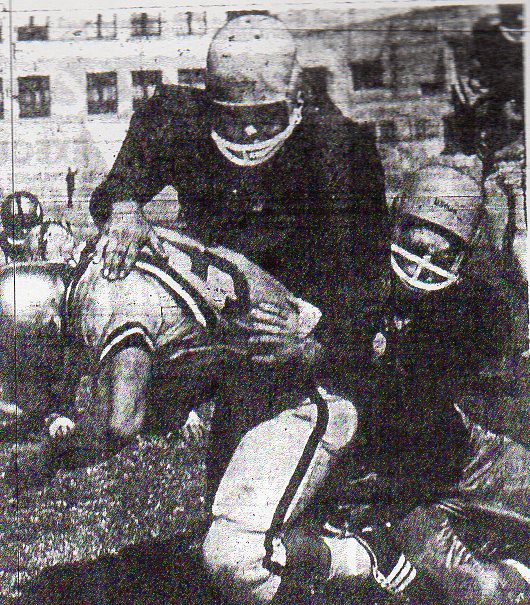
BOLD PREDICTION
Mission Bay coach Harry Anderson left school after the year for an assistant coach position at San Jose State, where Anderson eventually became head coach.
But Anderson set the tone for his last season in an interview with Jerry Magee of The San Diego Union:
“We’re the team to beat,” said Anderson, who added, “We always feel that way. We’re going to surprise some people.”
The Bucs were 0-5-3 in 1957.
Behind quarterback Bill Cravens, Mission Bay put together a 7-2 record, tempered only by 13-6 and 34-0 losses to St. Augustine and San Diego, respectively.
Mission Bay then embarked on a 18-65-1 stretch from 1959-68 that was interrupted by a 6-3 season under coach Bill Hall in 1969, followed by a 2-25 disaster with Al Lewis, who righted the ship with 7-3 and 7-2-1 finishes in 1973-74.
BUC STOPS WITH HIM
Quarterback Bill Cravens probably was the best, all-around athlete in Mission Bay history. He was all-City in football and basketball and the team scoring leader in both sports.
Cravens also had baseball or track and field potential but eschewed spring sports in favor of surfing at one of the nearby beaches.
KNOCKS EVERYONE BUT BOSS
Mount Miguel coach Tom Welbaum, a Woody Hayes disciple from Ohio State, sounded off about conditions on the Matadors’ hard tack practice field.
“We have 236 boys out for football and have had five broken bones in three weeks,” said Welbaum.
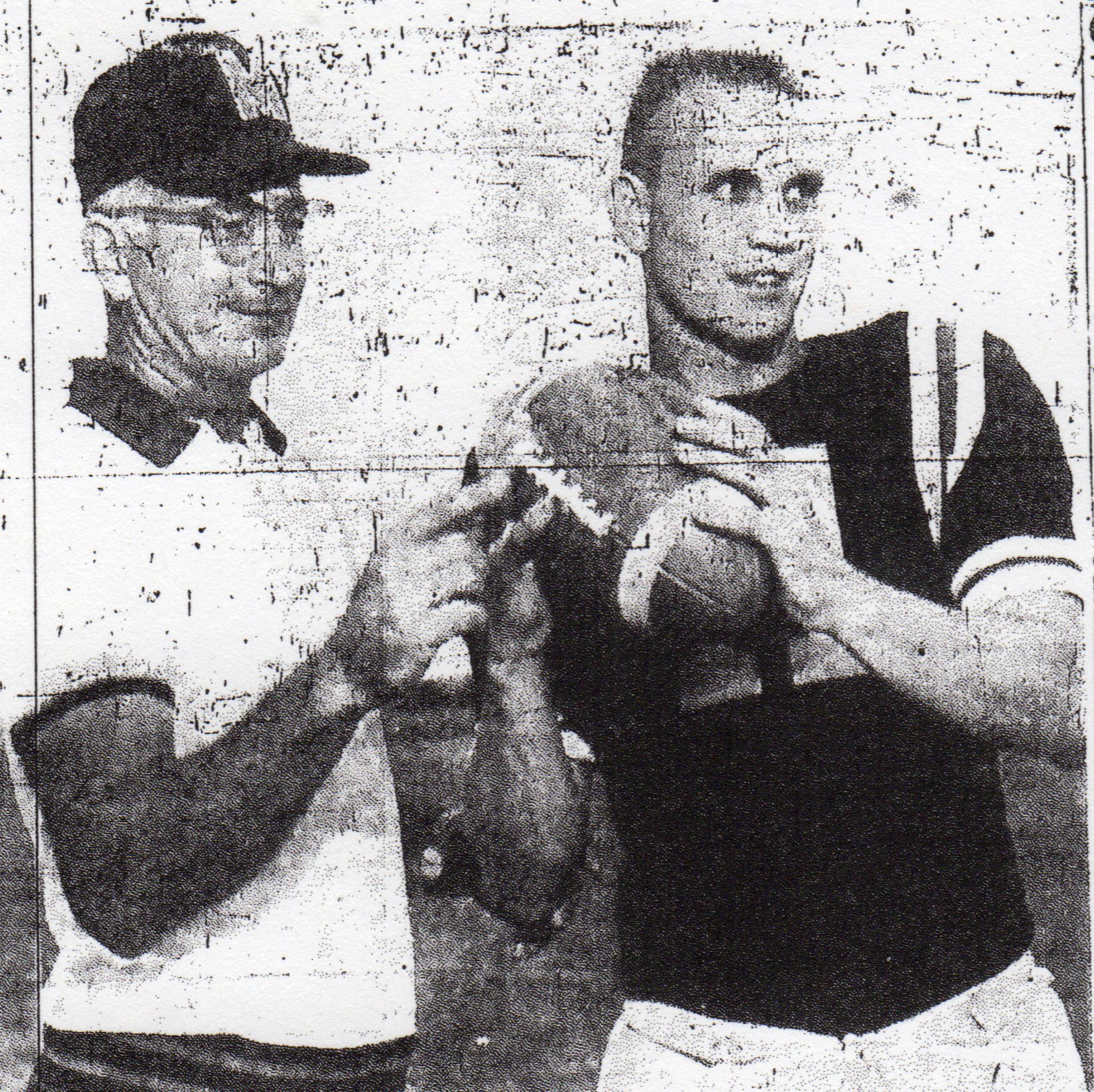
The coach was careful in his criticism and who he declared was at fault.
Covering himself, Welbaum said, “I don’t blame Lewis Smith, the district superintendent.”
Although Smith was the boss of bosses in the Grossmont district, Welbaum claimed that Smith’s “hands are apparently tied by a minority group within the district which refuses to spend money to get the field in proper condition.”
Welbaum’s son, Jim, a reserve quarterback, had been sidelined with a broken arm.
The team finally received permission to move its practices to Helix, beginning at 7 p.m.
HONORS
Ezell Singleton and center Roy Pharis of San Diego were all-CIF Southern Section first team. Escondido end Toby Thurlow and Sweetwater guard Max Freetley made second team. Sweetwater end Joe Meeker earned a third-team berth.
Ramona’s Gary Mayer, whose 193 points were more than anyone in the state, was a first-team, lower division choice. Center Les Mathews of Mar Vista and teammate Jerry Overton, who would play in the NFL with the Dallas Cowboys, earned third-team selections.
TRUE GRID
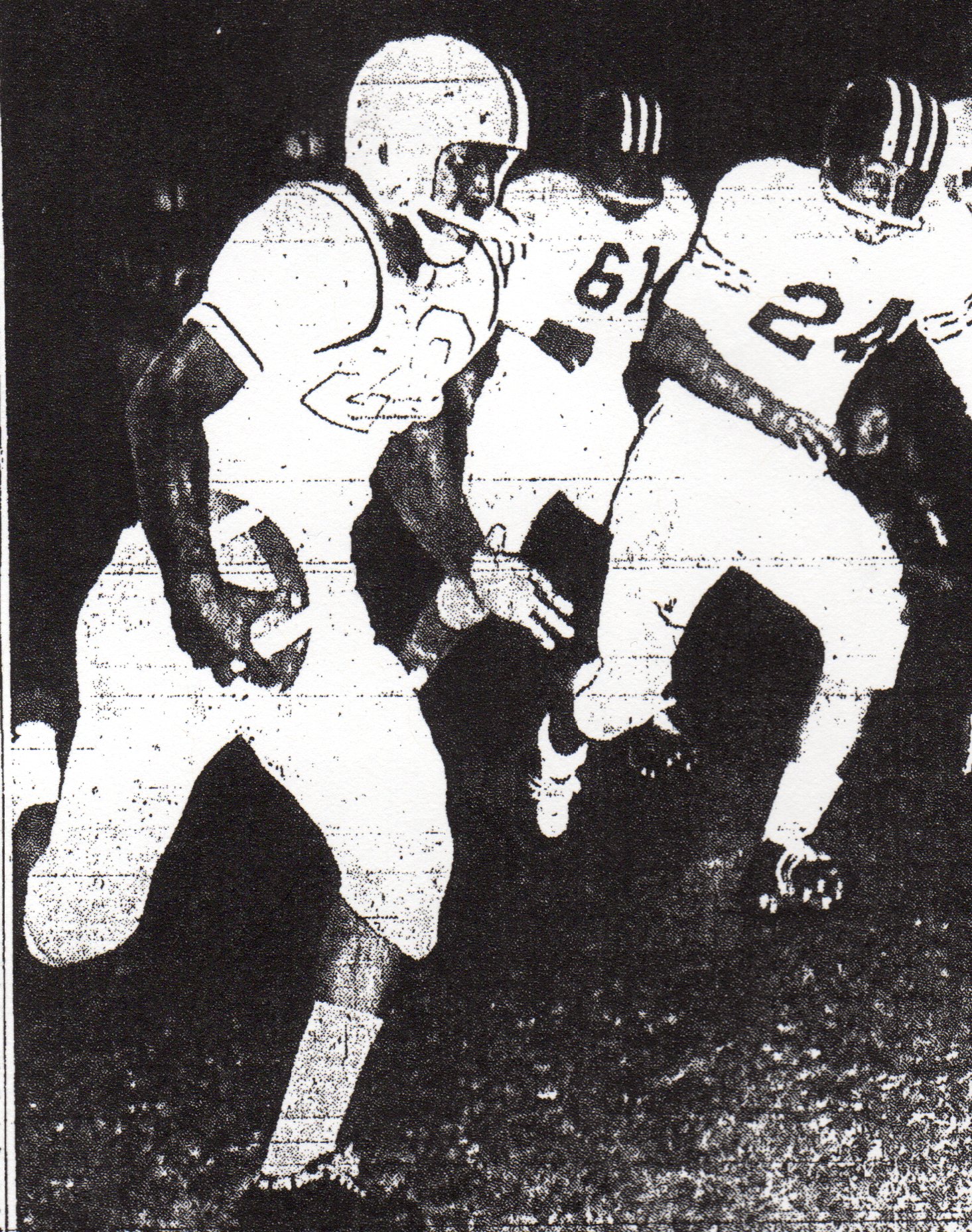
Ezell’s Singleton’s 27 touchdown passes tied the number thrown by Santa Monica’s Ronnie Knox in 1952 but fell short of the Southern Section record of 32 by Hawthorne’s Jack Contestible in 1953…Mar Vista halfback Jerry Overton was a 15th round draft choice out of Utah in 1963 and played one season for the Dallas Cowboys…St. Augustine’s 7-2 record was its best since 6-1 in 1941…Santa Monica star end Kenny Graham was a San Diego Chargers safety in the 1960s and led the Vikings with 17 touchdowns and 36 points after for a total of 144…500 Grossmont students took several chartered buses to watch the Foothillers drop a 27-6 decision at Yuma, Arizona…Sweetwater and Mar Vista installed lights at their campus stadiums…after bowing to Long Beach Poly, San Diego coach Duane Maley was 0-2 the next week…Maley predicted a Colton victory over Poly (the Yellowjackets lost, 41-27) and a Santa Monica win over Sweetwater (the Vikings won, 34-20)…Claremont Webb lost two games in the last four seasons, 6-0 to Ramona in 1957, and 26-6 to the Bulldogs this year…San Diego ran its record to 20-6 against Hoover in the fading city series, topping the Cardinals, 40-0, and outgaining them, 383-78…2-0 Lincoln changed offenses, going from Wing-T to Split-T before a game with Kearny…the Hornets lost, 18-13…the week before in a 13-0 win over Point Loma, Lincoln ran 42 running plays and threw 1 pass…halfbacks Ralph Hensley of Mission Bay and Kenny Griffin of Kearny played in the same jazz band…San Dieguito’s 19-6 victory over Oceanside was the Mustangs’ first over the Pirates…Oceanside held a 9-0-2 advantage in the series, which began in 1936….

Checking your Kenny Graham math, 17 TD + 36 PAT =138. Also, do you recall if the Cavemen played an afternoon game in 1958, perhaps even on Saturday? My late friend Chuck Freed and I started going to S.D. football and basketball games in ’55 and I think I remember one of Singleton’s last games was daytime. I might add that it still bothers me that Singleton chose UCLA and its single wing offense, with Ezell being such a great passer. Liked seeing some of those names–Dee Andrews, Ronnie Knox (w/o his father) and Jack Contestible–now long ago, but not forgotten. Great stuff, really enjoyed it. Ever consider a Ralph (Chip) Oliver story? I read his book back in the ’70s, “High For The Game” , funny stuff.
First, thanks for correcting my math. I was lousy in that subject, among others. I don’t think Singleton played any day football games. I saw most of his games in ’58 and they were all night contests. I’ve looked at the scores for ’56 and ’57 and recall only night games. Before Ezell got to San Diego, in 1954, the Cavers played Long Beach Wilson in an afternoon, CIF playoff at Balboa Stadium. I last talked to Chip in the mid-‘eighties. He had been retired probably seven or eight years and wanted to come back, with the Chargers. He said he was driving a fork lift and living in Indio and had worked and gotten his weight back up to about 210. I called the Raiders. I think Al Locasale told me that Chip was free and no longer on their reserve list. I went to coach Coryell and told him about the phone call but it was too late in the game for Chip. Don Coryell said he’d pass. Thanks for writing. I’ll be doing another 1958 story today on the other San Diego playoff team that year, Sweetwater, which made it further than the Cavemen.